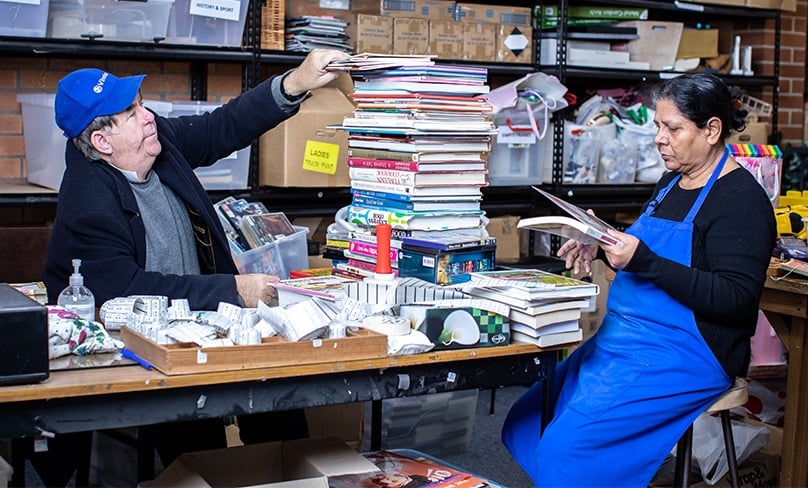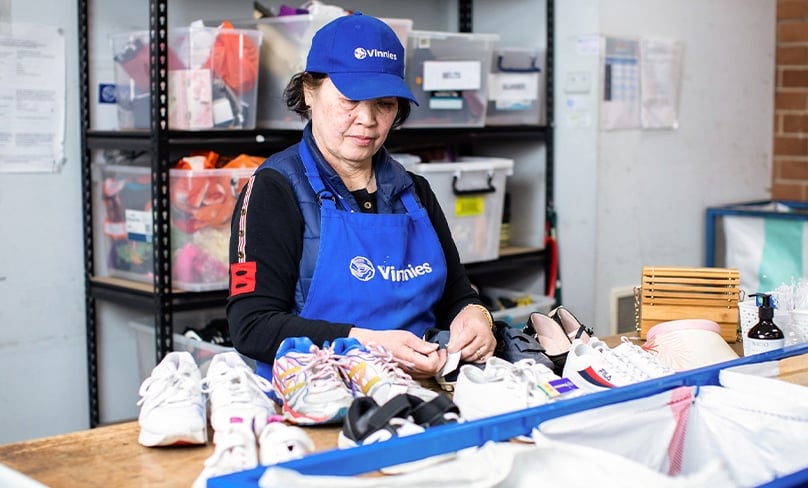
Our charities are besieged by increasingly stressed Australians desperate for assistance
Charities are seeing record numbers of first-time clients and are giving away increasing amounts of donations despite Australians being, on average, the fourth richest people in the world.
In the last financial year the St Vincent de Paul Society has seen a marked increase in both the amount of donations going out, and the intensity of stress experienced by clients.
Assistance provided by St Vincent de Paul Society conferences increased 25 per cent over the last financial year.
Tragically, twenty-six per cent of Vinnies clients are first-timers. A quarter are First Nations people, over a third use Jobseeker as their main source of income, and 85 per cent are given food.
“These shocking statistics, provided by a St Vincent de Paul spokesperson, show the ongoing effects of inflation and the COVID-19 pandemic.”
Housing stress affects 55 per cent of clients – meaning they spend more than 30 per cent of their income on rent or other housing costs.
These shocking statistics, provided to The Catholic Weekly by a St Vincent de Paul spokesperson, show the ongoing effects of inflation and the COVID-19 pandemic.
“Behind the stats are real people and real struggles for those we are called to assist,” said St Vincent de Paul Society Sydney Central President, Tony Cranney.
“Until you meet them in their homes or where they live, the real story is not known.

“By building a relationship and their trust we then might recognise the face of Christ and better understand the challenges and hardship they face on a daily basis.”
A new report from the Australian Council of Social Services shows that despite our wealth, more and more Australians may find themselves visiting the local Vinnies conference.
The Wealth Inequality Pandemic, released on 22 July by ACOSS in partnership with academics from the University of NSW, found that Australian households are the fourth richest in the world.
Rapidly rising property values played a large part, accounting for over two-thirds of the increase in household wealth during the pandemic.
“Wealth inequality is stark: the majority of Australians, the lowest 60 per cent, possess just 17 per cent of all wealth in Australia.”
Yet the bottom 40 per cent of households hold risky levels of debt over three times their annual income, with the same amount lacking the savings to cover three weeks of lost income.
Wealth inequality is stark: the majority of Australians, the lowest 60 per cent, possess just 17 per cent of all wealth in Australia. But our 130 billionaires had a very different year when compared to the typical Vinnies client, increasing their wealth on average by $395 million each.
The top 10 per cent of Australians averaged $6.1 million in household wealth, or 46 per cent of all wealth.
“This research also points to the precariousness of life for people on low incomes in Australia, 39 per cent of who are unable to cover three weeks of lost income, and the need to bolster the social safety net so that unemployment does not inevitably lead to poverty,” said acting ACOSS CEO, Edwina MacDonald.
